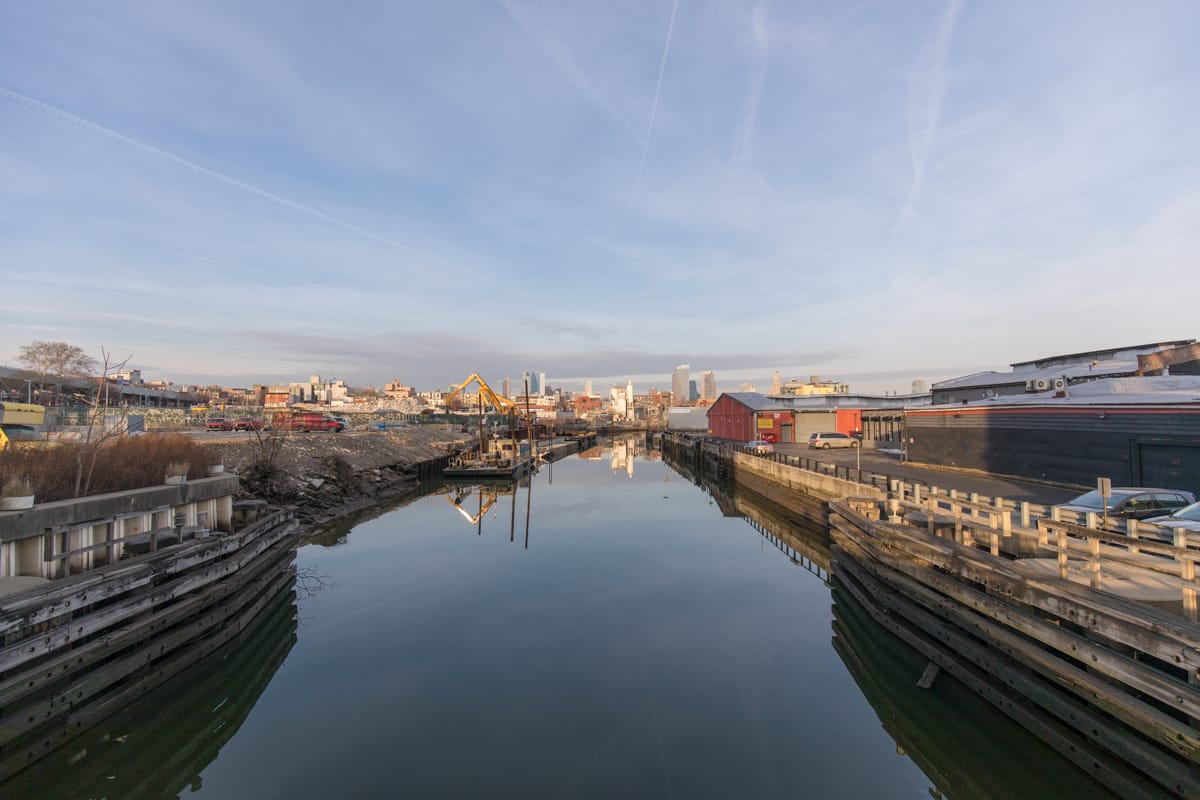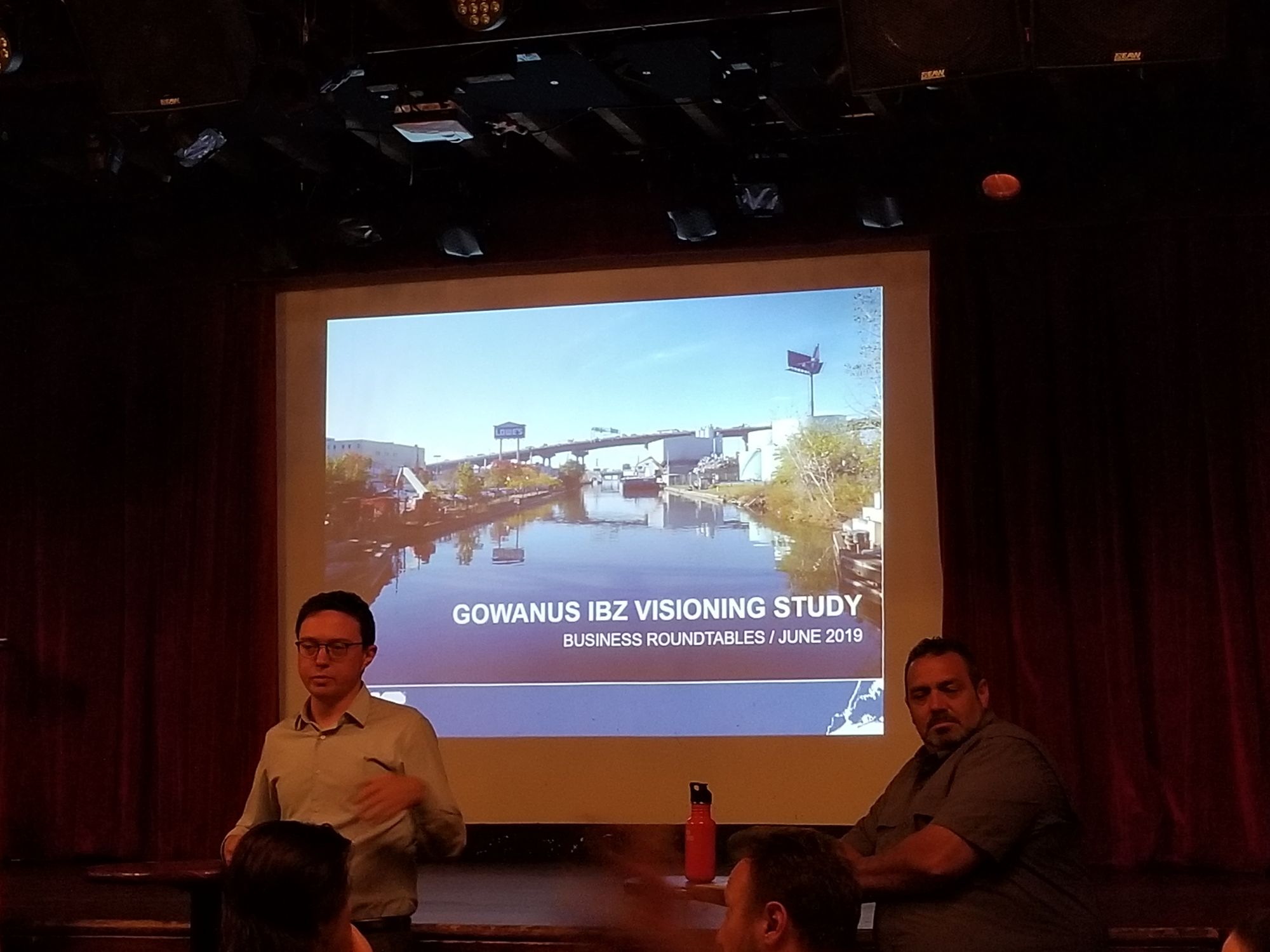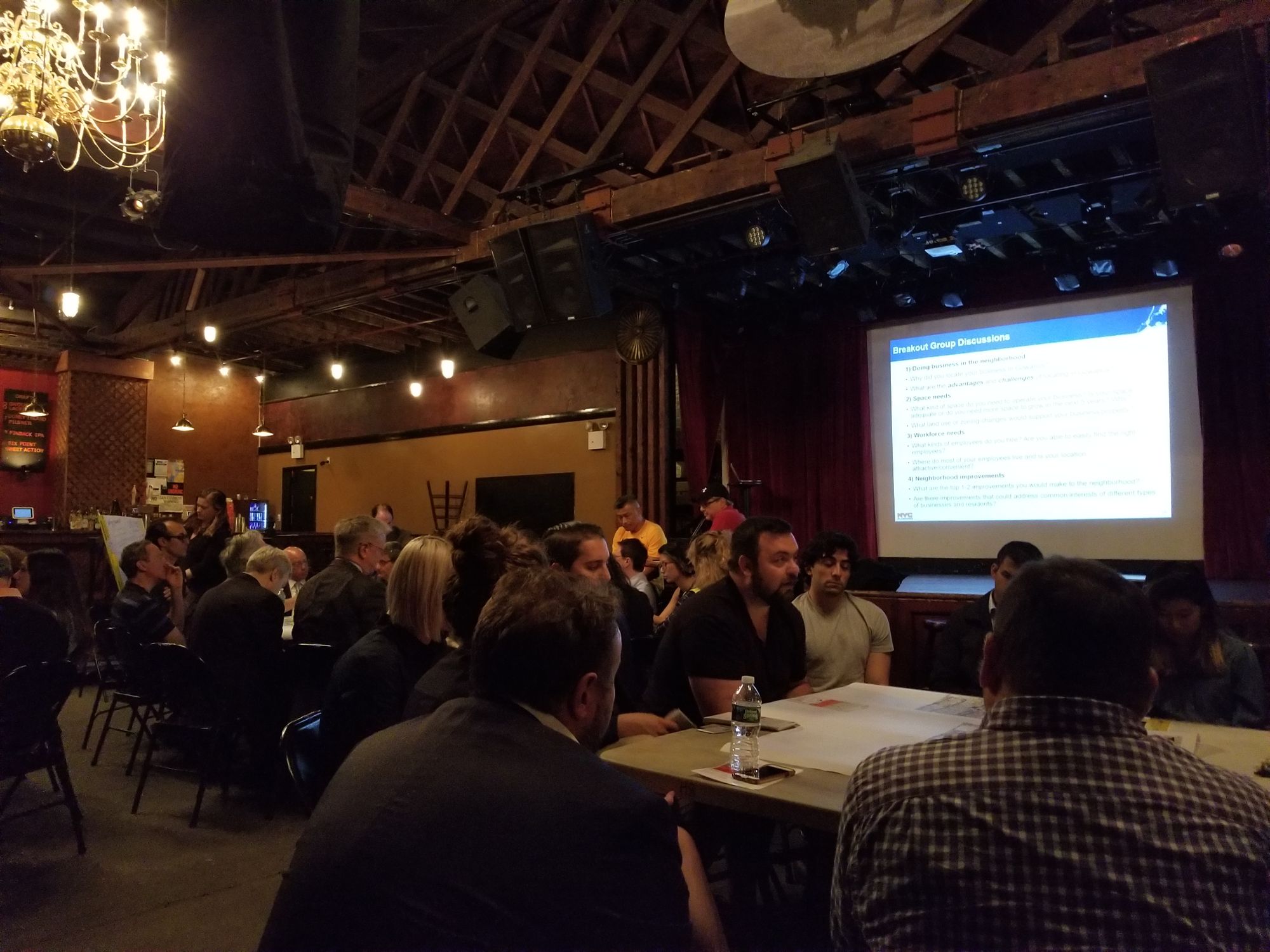Businesses Feel Left Behind In Gowanus Rezoning


GOWANUS – Business owners in the “industrial business zone” of Gowanus made it known to officials on Wednesday that they feel left behind by the neighborhood’s larger rezoning, urging the de Blasio administration to take steps to protect manufacturing and industrial business activity in the area.
The business owners and officials met at the first of two “business roundtables” regarding the Gowanus Industrial Business Zone (or IBZ) Vision Study, with the aim of finding a balance between protecting the existing manufacturing uses in the area and developing a future economy potentially based in new industries as the area continues to grow. The meeting took place at the Bell House, a warehouse-turned-bar on 7th Street and 2nd Avenue, ironically displaying the degree to which the neighborhood has changed in recent years.
The meeting served as a regrouping after last year’s release of the Gowanus Draft Framework, a larger neighborhood plan, and long-running discussions in policy circles over the neighborhood’s future. The larger Gowanus rezoning discussions, focusing largely on residential and commercial development in the area, have intentionally left out the IBZ because of its unique characteristics within the neighborhood and among IBZs in the city.

For instance, those present claimed that as IBZs in New York City go, Gowanus is both well-served by transit and surrounded by expensive residential neighborhoods, putting existing commercial and industrial tenants at risk of displacement as the neighborhood continues to change.
“I think Gowanus has to be looked at as a whole,” said Paul Basile, the president of the Gowanus Alliance, a group representing the interests of Gowanus-based businesses, in an interview. “It can’t be segregated, it can’t be portioned up. I think it sells one group of Gowanus short, and I think it ultimately leaves us vulnerable unless we have an opportunity to express what our hopes and dreams are for the future here.”
Stakeholders made clear the many contrasts animating the attempts at preserving the area’s manufacturing. While it was broadly acknowledged that the area’s space limitations largely constrains growth, locals expressed concern to the city planning officials of a rezoning allowing in more lucrative businesses, including tech firms and entertainment entities, and pushing out the legacy manufacturing tenants that have long anchored the area. There was also broad agreement that new residential development should be curbed in the IBZ, as a further means to hinder gentrification.
“Gowanus has always been a job hub,” Basile said. “As the economics changed, as the manufacturing industry changed, Gowanus was very good at adapting, and very good at finding ways to reuse and repurpose their spaces for new businesses, modern businesses, modern manufacturing. We are hoping that this keeps it moving in that direction, rather than losing that ability to adapt and find new uses.”

Attendees highlighted issues such as high parking requirements as hindering the area’s full potential. Statistics taken from a slideshow by the Department of City Planning, presented at the meeting, showed that 18 percent of the IBZ is zoned for parking. Many attendees, who also noted the issues arising from the limited space in the neighborhood and city at large, advocated for reducing parking requirements so as to allow more businesses, either legacy industrial or newer industries such as tech or entertainment, to take over the spaces currently used for parking.
More businesses could also move in if the allowable floor-area-ratio, or FAR, in the area was to be increased, some attendees said. That would allow for larger buildings to be constructed, and for more tenants to take over the new, large spaces. Attendees were wary of a sweeping FAR increase, instead preferring more piecemeal increases in appropriate circumstances.
Larger Gowanus rezoning talks have been in force for years, even if no official framework yet exists, and neighborhood stakeholders have had a long time to provide sufficient input to the administration on potential issues that could arise. In contrast, city planning officials told attendees of Wednesday’s meeting that they planned to issue a report in the fall of this year, allowing just a short time frame to reconcile the issues present in the IBZ.
“I think it’s important that both be done at the same time, because the momentum is there now,” Basile said. “If we don’t do something with the IBZ now, and the other rezoning moves forward and gets finalized and progresses, the political will and the wind will come out of our sails in the IBZ and we will see the writing on the wall.”
City Council Member Brad Lander, who represents Gowanus and was present for the end of the meeting, said in an interview with Bklyner that the tight timeline would allow both the larger rezoning and the more targeted IBZ improvements to take place simultaneously, preventing the IBZ from being “left behind” by the changes taking place in the larger neighborhood.
“If we are going to rezone the areas outside the IBZ in a way that allow additional residential growth, we have to make serious commitments to the IBZ itself to support job growth,” Lander said. “So the reason we need this vision in place is so that we can make real commitments and begin taking action as part of the rezoning process.”



